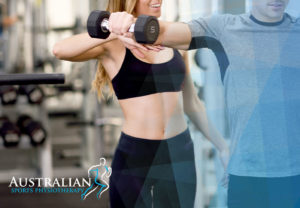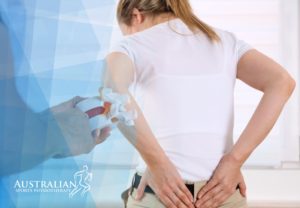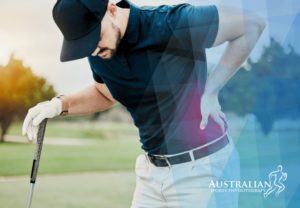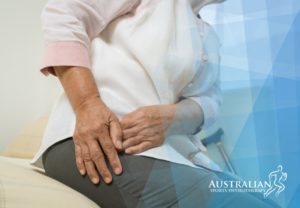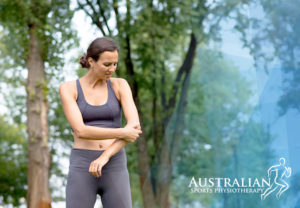Investing in your health is a proactive and long-term approach to maintaining and improving your well-being. Women can experience a variety of health conditions that are specific to their reproductive systems, hormonal fluctuations, and other gender-related factors. Regular physical activity offers numerous benefits, contributing to both physical and mental well-being.
Common health issues women face
Here are some of the common health issues facing women; and how Exercise Physiology plays an integral role in the prevention and treatment of these health issues.
1. Polycystic Ovarian Syndrome (PCOS)
Polycystic Ovarian Syndrome (PCOS) is a condition that effects the hormone levels in women of a reproductive age (from when you get your first period to when it ends at menopause).
It can affect a persons body in many ways such as excess androgens (‘male hormone’), insulin resistance, reduced fertility, irregular or absent periods, changes in your skin, excess hair on the body and face, possible reduction in the hair on your head and can significantly impact mental wellbeing. PCOS can also put women at an increased risk of other health conditions such as sleep apnoea, type II diabetes, CVD and cholesterol abnormalities.
Exercise can be highly beneficial for individuals with Polycystic Ovary Syndrome (PCOS) by playing a role in managing some of its associated symptoms.
How can exercise help individuals with PCOS
-
- Improves insulin sensitivity: Many women with PCOS have insulin resistance, which can lead to weight gain and difficulty in managing blood sugar levels. Regular exercise helps improve insulin sensitivity, making it easier for the body to regulate blood sugar levels.
- Regulates menstrual cycles: Exercise can help regulate menstrual cycles in women with PCOS by
reducing insulin resistance and promoting hormonal balance. - Reduces stress: PCOS can be associated with increased stress levels. Exercise is known to reduce
stress by stimulating the production of endorphins, which are natural mood elevators. - Improves mood and mental health: Regular physical activity can improve mood and overall mental
well-being, which can be particularly beneficial for individuals with PCOS who may experience mood swings and depression. - Promotes cardiovascular health: Women with PCOS are at a higher risk of developing cardiovascular disease. Exercise, especially aerobic exercise, helps improve cardiovascular health by strengthening the heart and lowering blood pressure and cholesterol levels.
- Enhances fertility: For women with PCOS who are trying to conceive, regular exercise can help
improve fertility by promoting ovulation and hormonal balance.
It’s important for individuals with PCOS to engage in a balanced exercise routine that includes both cardiovascular exercises (such as walking, jogging, cycling, swimming) and strength training exercises (such as weightlifting or bodyweight exercises). Consulting with an Exercise Physiologist can help create a personalised exercise plan that takes into account individual needs and preferences.
Additionally, it’s crucial to start slowly and gradually increase the intensity and duration of exercise to prevent injury and ensure long-term adherence
2. Endometriosis
Endometriosis is a chronic, gynaecological condition where tissue that lines the uterus grows outside the uterine cavity, usually around the pelvis.
Roughly 700,000 Australian women are currently living with endometriosis.
The exercise that is prescribed for people with this condition often focuses on the symptom
management. Pain and discomfort in the lower back and pelvic region are often described and
associated with endometriosis.
How Exercise can help with Endometriosis
-
- reducing inflammation in the body
- reducing oestrogen levels
- emotional wellbeing
- energy levels, motivation and self-confidence
- reducing guarding postures around lower back and abdomen
- calming the nervous system
- muscle endurance and strength
- improved sleep quality and habits
3. Breast Cancer
Breast cancer is a type of cancer that forms in the cells of the breast. It can occur in both men and women, but it is far more common in women. Breast cancer can start in different parts of the breast, such as the ducts that carry milk, the lobules that produce milk, or other cells within the breast tissue. The diagnosis on Breast Cancer can bring a roller-coaster of emotions as well as many new challenges and side effects.
People who are diagnosed with breast cancer tend not to think about exercise as an additional treatment option, however exercise plays a big part in the management of breast cancer not only during treatment but after treatments have ended as well.
How can exercise help with the treatment of breast cancer?
So how does exercise help in the treatment of breast cancer? Exercise can help counteract the adverse effects that come with cancer and its treatment such as:
-
- Manage and reduce cancer-related fatigue
- Reduction in overall side effects experienced
- Enhanced outcomes during and post-treatment
- Maintaining lean muscle mass
- Improved mood
- Maintaining bone mineral density
- Improve appetite and reduce nausea
- Maintain aerobic conditioning
Exercise prescription will depend from person to person and their individual circumstances so it is important to speak to your exercise professional such as an Exercise Physiologist.
4. Menopause
Menopause is a natural biological process that marks the end of a woman’s reproductive years. It typically occurs around the age of 45 to 55, with the average age being around 51. Menopause is defined as the cessation of menstruation for 12 consecutive months due to a decline in reproductive hormones, particularly estrogen and progesterone, produced by the ovaries.
The transition to menopause, known as perimenopause, can last for several years and is characterised by irregular menstrual cycles and various symptoms caused by hormonal fluctuations.
Common symptoms of perimenopause and menopause include:
-
- Irregular periods: Menstrual cycles may become shorter or longer, with irregularity in the timing of
periods. - Hot flashes: Sudden sensations of heat, often accompanied by sweating and flushing, typically
experienced in the upper body and face. - Night sweats: Episodes of sweating during sleep, which can disrupt sleep patterns and lead to fatigue.
- Vaginal dryness: Decrease in vaginal lubrication, which can cause discomfort during sexual intercourse and increase the risk of urinary tract infections.
- Sleep disturbances: Insomnia or difficulty staying asleep, often associated with night sweats or hormonal fluctuations.
- Mood changes: Mood swings, irritability, anxiety, and depression are common during perimenopause and menopause, partly due to hormonal changes and partly due to other factors such as life transitions and stress.
- Decreased libido: Changes in hormonal levels can lead to a decrease in sexual desire or arousal.
- Weight gain: Many women experience weight gain, particularly around the abdomen, during menopause, which can be influenced by hormonal changes, decreased metabolism, and lifestyle factors.
- Changes in skin and hair: Some women may notice changes in their skin, such as dryness or thinning, as well as changes in hair texture or loss.
- Bone density loss: Decrease in bone density, leading to an increased risk of osteoporosis and fractures.
- Irregular periods: Menstrual cycles may become shorter or longer, with irregularity in the timing of
Benefits of exercise physiology for women with menopause
Exercise plays a crucial role in maintaining overall health and well-being during menopause. Here are some ways in which exercise can benefit individuals going through menopause:
- Managing Symptoms: Exercise can help alleviate many common symptoms of menopause, including hot flashes, mood swings, insomnia, and fatigue. Regular physical activity stimulates the production of endorphins, which are natural mood lifters and can improve sleep quality, leading to a better overall sense of well-being.
- Bone Health: Menopause is associated with a decrease in oestrogen levels, which can lead to bone loss and an increased risk of osteoporosis. Weight-bearing exercises such as walking, jogging, dancing, and strength training can help maintain bone density and reduce the risk of fractures.
- Heart Health: Estrogen decline during menopause is also linked to an increased risk of heart disease. Regular aerobic exercise, such as brisk walking, swimming, cycling, or dancing, can help lower blood pressure, improve cholesterol levels, and reduce the risk of heart disease.
- Muscle Strength and Flexibility: Strength training exercises, such as lifting weights or using resistance bands, can help preserve muscle mass and strength, which tend to decline with age and hormonal changes. Additionally, flexibility exercises like yoga or Pilates can improve joint mobility and reduce the risk of injuries.
- Stress Reduction: Menopause can be a stressful time for many women, as they navigate physical changes and hormonal fluctuations. Exercise is a proven stress reliever, as it releases endorphins and reduces levels of stress hormones like cortisol, leading to improved mood and a greater sense of relaxation.
- Cognitive Health: Some research suggests that regular exercise may help reduce the risk of cognitive decline and improve cognitive function in menopausal women. Physical activity increases blood flow to the brain, promotes the growth of new neurons, and enhances overall brain health.
It’s important for menopausal women to engage in a variety of exercises that include aerobic, strength training, flexibility, and balance exercises to reap the full benefits of physical activity. However, it’s essential to consult with an Exercise Physiologist before starting any new exercise program, especially if there are underlying health conditions or concerns.
